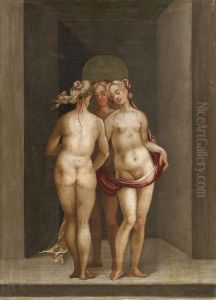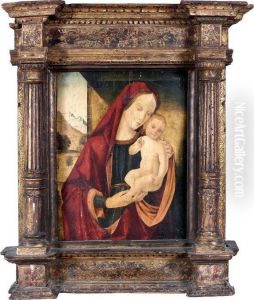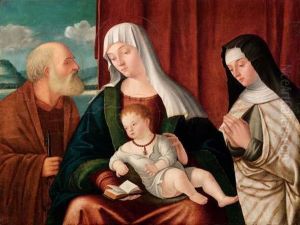Benedetto Carpaccio Paintings
Benedetto Carpaccio was an Italian painter of the Venetian school, who is known for his large-scale narrative works and detailed representations of contemporary Venetian life and architecture. Born around 1465 in Venice, Carpaccio emerged from the vibrant artistic milieu of the late 15th and early 16th centuries, a period that witnessed the flourishing of the Renaissance in Italy. While there is limited information on his early life and training, it is believed that he might have been a pupil of Lazzaro Bastiani and was influenced by the works of Gentile Bellini and Vittore Carpaccio, his more famous contemporary and perhaps relative, whose name and style he is often associated with.
Carpaccio's work is characterized by its vivid detail, colorful palette, and the incorporation of elaborate architectural and natural settings. He was particularly adept at narrative storytelling, employing a meticulous and descriptive approach that brought biblical, hagiographic, and historical scenes to life. Among his notable works are a series of paintings dedicated to the life of Saint Ursula, commissioned for the Scuola di Sant'Orsola in Venice. These paintings showcase his skill in creating complex, multi-figure compositions and his ability to weave intricate narratives through visual means.
Despite his considerable talent and contributions to the Venetian school, Carpaccio has often been overshadowed by his contemporaries, such as Giovanni Bellini and Giorgione. Nonetheless, his works have continued to be appreciated for their narrative depth, attention to detail, and depiction of Venetian society and culture. After a prolific career, Benedetto Carpaccio's life came to an end around 1525 or 1526. His legacy lives on through his influential works, which remain vital to understanding the breadth and diversity of Renaissance art in Venice.


